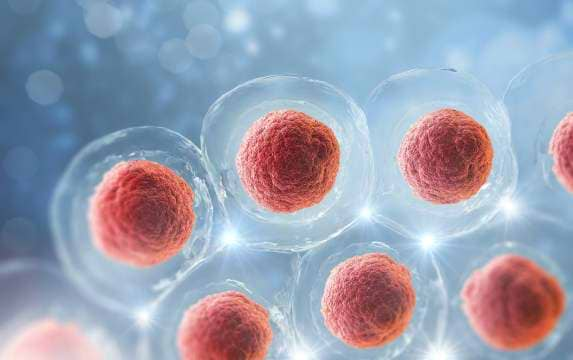Obesity is currently recognized as a disease, and the latest studies show that obese men have a significant risk of developing erectile dysfunction
The health authorities have officially defined obesity as a chronic disease, currently considered a global epidemic. This condition has major public health concerns due to its very high prevalence: in Israel alone, obesity rates in adults have reached 35% of the general population, the rate of overweight is 65%, while each year 4,000 people die as a result of obesity complications.
What is Obesity?
The definition of obesity relates to a state where weight is higher than what is considered healthy for a given height due to excess fat accumulation. The acceptable measure for assessing obesity is the Body Mass Index (BMI) which is calculated by dividing a person’s weight in kilograms by the square of height in meters. When the BMI is within the 25-29.9 range, a person is considered overweight, and a BMI of ≥30 indicates obesity.
Central Obesity
Obesity isn’t merely diagnosed based on BMI. Although it’s an important measure, it omits factors such as age, gender, muscle mass as well as the location of fat accumulation in the body – a parameter with important health implications, including with regard to erectile function in men. Central obesity (also known as abdominal obesity or visceral adiposity) relates to excess accumulation of fat in the deeper tissues of the abdominal area and around internal organs. It is an independent risk factor for the development of systemic inflammation and chronic diseases, such as metabolic and cardiovascular diseases, fatty liver, hypertension, digestive problems, various cancers and erectile dysfunction (ED). According to the World Health Organization, waist circumference is one of the most important factors in the diagnosis of central obesity, defined in men as 94cm and above. The highest range of waist circumference in men is 102 cm and above, representing severe central obesity.
In recent years, various studies have examined the link between obesity, particularly central obesity, and ED. A 14-year study concluded that obesity is an independent risk factor for ED, and other studies have shown that obese men have a 30% higher chance of developing sexual dysfunction than people of normal weight. Another study found that men with a BMI of 25-30 (overweight) have a 1.5-fold increased risk of ED, while men with a BMI of ≥30 (obesity) have a 3-fold increased risk of ED, compared to men within the normal BMI range. The researchers concluded that
obesity contributes to the development of ED to a greater extent than the aging process – which is one of the main risk factors for ED.
With regards to central obesity, it was found that ED was more prevalent in men with a higher waist circumference, and it increased in correlation with the severity of obesity. Moreover, the severity of ED correlated with other comorbid medical conditions, including obesity, with severely obese patients having reduced responsiveness to ED medications. Weight reduction with bariatric surgery, on the other hand, significantly improves ED in obese men. For these reasons, it isn’t surprising that in the United States alone, obesity and diabetes are estimated as responsible for 8 million cases of ED, and one of the studies found that 80% of the men with ED are likewise obese.
Why does Obesity Hit Below the Belt?
On the most basic level, it can be said that obesity is caused when energy intake (calories consumed) chronically exceeds energy expenditure. However, in practice, the causes of obesity are much more complex. It is already known that the human body has complex mechanisms for controlling balanced body weight. However, it is also known that these mechanisms often fail due to genetic, hormonal, metabolic, psychological and other influences. Over the years, studies that examined the association between obesity and ED have found that both conditions share similar mechanisms of development. These mechanisms are related mainly to changes in brain regulation over the neuro-endocrine system and dysfunction of the endothelium – the thin membrane that lines the inside of blood vessels. Additionally, in cases of central obesity, this deep abdominal fat layer excretes biological substances which induce systemic inflammation, blood vessel dysfunction and hormonal imbalance, and these processes are directly associated with erectile function.
Central Obesity and Testosterone
When high levels of free fatty acids are excreted from the abdominal fat layer, they trigger an inflammatory response in the hypothalamus – the brain’s control center for metabolism and reproduction. This response disrupts the control center in the hypothalamus and causes resistance to leptin – the hormone which regulates hunger and satiety in the body.
The brain identifies the levels of leptin in the body and uses this information like a barometer: when leptin levels are within the normal range, it means we
have eaten enough and the brain will generate satiety signals, and vice versa – when leptins levels are low, we will feel hungry. However, in cases of ‘leptin resistance,’ the brain cannot properly ascertain leptin levels, and falsely construes that they are low. Consequently, a leptin-resistant person will continue to feel hungry despite the continuous increase in leptin levels. Leptin resistance is a characteristic feature of obesity, but it likewise affects the reproductive organs and processes. High leptin levels cause a decrease in GnRH production (Gonadotropin-releasing hormone) from the hypothalamus – which indirectly leads to a decrease in testosterone blood levels. At the same time, testicular testosterone release is inhibited. And when testosterone levels drop, lack of sex drive and ED can result.
Low testosterone levels in obesity are likewise associated with elevated aromatase enzymatic activity in abdominal fat cells. It happens when the aromatase enzyme converts cholesterol components into estrogen instead of testosterone, leading to a decrease in testosterone blood levels, lack of sexual desire and ED.
In one epidemiology study, the researchers found a correlation between high BMI, higher rates of ED and low testosterone levels. They further reported that testosterone treatment for 5 years had shown a progressive and sustainable reduction of body weight among obese men with low testosterone levels.
Obesity and Endothelial Dysfunction
Dysfunction of the endothelial layer of blood vessels is an additional link between obesity and ED. As mentioned, the abdominal fat layer is an active tissue that secretes inflammation-inducing substances, leading to an inflammatory process (both systemic and in blood vessels) and to endothelial dysfunction. A main feature of endothelial dysfunction is reduced production of the molecule Nitric Oxide (NO). Under normal conditions, NO production from penile blood vessels causes blood vessel relaxation, leading to increased penile blood flow and an erection. Thus, when NO production is suppressed, penile blood flow decreases, and ED develops.
A clinical study found that CRP – a marker of systemic inflammation- is higher among obese men with ED compared to obese men without ED, suggesting a
link between obesity, systemic inflammation and ED.
Another hormone affecting the function of blood vessels is adiponectin, which is secreted mainly from fat tissues. It has anti-inflammatory, anti-diabetic and anti-atherosclerosis (it fights plaque building up inside arteries) effects, and it likewise enhances the sensitivity of insulin receptors on the vascular endothelium.
Activating insulin receptors on the vascular endothelium triggers NO production, blood vessel relaxation, and enhanced blood flow into the penis. However, studies indicate a decrease in adiponectin levels in obesity, which induces insulin resistance, activation of inflammatory processes, and endothelial dysfunction with reduced penile blood flow.
Metabolic Syndrome and ED
Obesity, particularly central obesity, constitutes a leading cause in the development of metabolic syndrome (known as Syndrome X). It is characterized by a collection of risk factors for cardiovascular disease and type 2 diabetes, including insulin resistance, fatty liver, hypertension and blood lipid imbalance. Recently, ED has been added to the collection of risk factors characterizing metabolic syndrome in men, while a high prevalence of metabolic syndrome was found among obese men with ED.
As mentioned, insulin is a hormone that when binding to receptors in blood vessels, it induces NO production and blood vessel dilatation. It is currently assumed that insulin resistance (a feature of metabolic syndrome and a comorbidity of obesity) is associated with reduced NO production, blood vessel dysfunction and ED, including in younger men.
Health Conditions Associated with Obesity
Obesity is usually associated with other health conditions (comorbidities), such as diabetes, hypertension, high blood lipids, etc. These comorbidities constitute an independent risk factor for sexual dysfunction and ED in men, because they damage small blood vessels and nerves which participate in the erection process. Type 2 diabetes, for example, is obesity’s most common comorbid condition and an independent risk factor for ED. Furthermore, most obesity comorbidities require drug treatment, but these drugs often have side effects that undermine sexual function, particularly sexual desire and erection quality.
The Company hereby clarifies that the information contained on the website is for informational purposes only, and is not intended to be a substitute for professional medical and healthcare advice, and does not constitute medical advice or opinion. Always seek the advice of your physician or other qualified health provider with any medical condition or question you may have regarding a medical condition.





